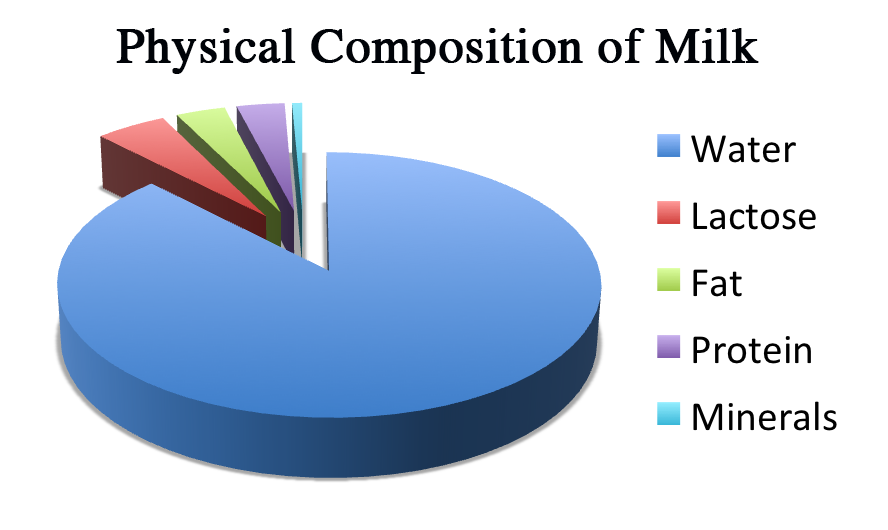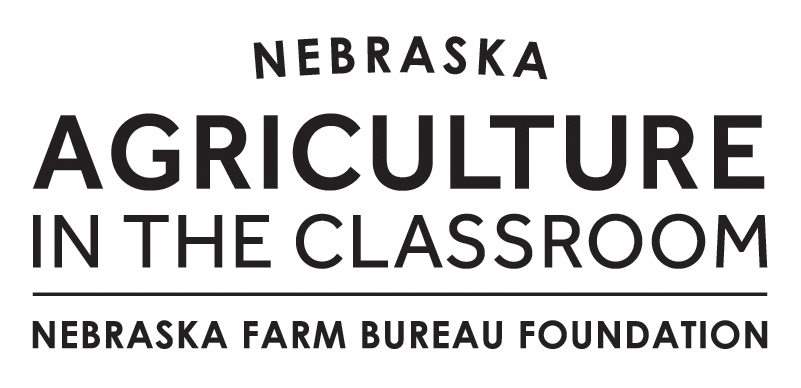Lesson Plan
Cheesemaking: From Liquid to Solid
Grade Level
Purpose
Students make fresh mozzarella cheese and discover the science (changing a liquid to a solid), art, and craft involved in the development of specialty cheese. Grades 3-5
Estimated Time
Materials Needed
Engage:
Activity 1: The Science of Cheesemaking
- Mozzarella Cheese Recipe
- Large pot with lid
- Colander
- Microwave safe bowl
- Long knife to cut curds
- Slotted spoon
- 2 small bowls
- Thermometer
- Measuring cups and spoons
- Stove or hot plate
- Microwave
- Milk
- Citric acid*
- Rennet*
- Be sure to purchase rennet from a cheesemaking supplier or agclassroomstore.com. The rennet commonly available at a grocery store is primarily for desserts and is not adequate to form a true curd for mozzarella cheese.
- Salt
- Cheesemaking: Science, Art, Craft Activity Sheet
- Physical Composition of Milk
*These items are included in the Mozzarella Cheese Kit, which is available for purchase from agclassroomstore.com.
Activity 2: The Art and Craft of Cheesemaking
Vocabulary
casein: a protein that makes up about 80% of milk
cheese: a food made from pressed curds of milk
coagulate: to change to a solid or semi-solid state
culture: beneficial bacteria in the cheese making process that changes lactose into lactic acid, helps coagulate (set) milk, and helps the whey to drain
curd: clumps of casein (coagulated protein) that separates from the liquid when milk coagulates
enzyme: protein catalyst, which speeds up a specific chemical reaction
lactose: a disaccharide sugar present in milk which contains glucose and galactose units
rennet: a complex set of enzymes produced in the stomach of young ruminant animals
whey: liquid that drains from the curd of clotted milk; contains lactose, proteins, water-soluble vitamins, and some minerals
Did You Know?
- It takes approximately 10 pounds of milk to make 1 pound of cheese.1
- The holes found in Swiss cheese are known as "eyes" to a cheese maker.2
- Cheddar cheese is not naturally yellow. All cheese is white, like the milk it is made from. Yellow cheeses have had a coloring added to them.1
- Mozzarella was once only made with milk from a water buffalo. Today mozzarella is most often from milk produced by cows.3
Background Agricultural Connections
The United States ranks second in the world for cheese production and produced about 6 million tons of cheese in 2020.9 In 2021, it was estimated that over 55,000 people were employed in the cheese production industry in the United States. Cheesemaking is a science, an art, and a craft. Science is the tool to transform milk into cheese. Art accounts for the creative skills used in the development of new cheese flavors and varieties. Crafts represent activities requiring skill. Cheesemaking requires many skills.
Origin of Cheese
Cheese is one of many products made from milk. The exact date of origin for cheese is unknown, but it has been found in Egyptian tombs and murals from 4,000 years ago. It is thought that cheese was discovered by accident when it was common to store milk in a container made from an animal stomach. The enzyme rennet is found in ruminant stomachs. When added to milk, it causes the milk to coagulate and separate curds (solid proteins) from whey (liquid). This means that if milk is store in a ruminant stomach (a common practice before glass and plastic), the milk will turn into fresh cheese.
Today, the art of making cheese has become much more technical.4 Now there are hundreds of cheese varieties which can be grouped into eight categories including blue, hard, pasta filata, processed, semi-hard, semi-soft, soft and fresh, and soft-ripened.5 Currently, more than one-third of all millk produced each year in the United States is made into cheese.6
Cheesemaking Process
The cheesemaking process uses science and chemistry to remove whey and liquid from milk to form a curd (cheese).7 Along with a vast array of cheese types, there are also a variety of cheese-making processes. Each process shares the same basic components:
- Milk: All cheese is made from milk. In the United States, milk from cows is most common. However, many specialty cheeses are made from the milk of sheep, goats, and other mammals. Milk is composed of varying amounts of carbohydrates (lactose), fat, protein (casein and whey), vitamins, and minerals.
- Acid: soft cheeses are made by adding a type of acid to milk to make it coagulate. Citric acid and vinegar are two examples of acids used in the cheesemaking process.
- Bacterial Cultures: Chemical changes in milk can be triggered using bacterial cultures. The use of beneficial bacteria creates chemical responses in the cheese to enhance specific flavors.
- Enzymes: The most common enzyme used to make cheese is Rennet. Rennet causes the milk to coagulate and is used to make hard cheeses.8 It helps the milk mixture separate the forming curds from the whey. Rennet splits off the hydrophillic portion of the casein micelles so it will no longer stay suspended in the aqueous solution of milk. Instead, the casein aggregates together to form the curds, while the whey (or liquid portion) separates.7
- Time: Some cheeses can be made in a short amount of time and others require aging to develop the proper flavor, texture, and moisture levels.
- Heat: Precise temperatures allow the enzymes and bacterial cultures to work properly in the cheesemaking process by allowing the beneficial bacteria to do its work.8
- Salt: Salting helps draw out additional moisture in the cheesemaking process. It also plays a huge role in the flavor of cheese.
Engage
- Ask the students, "What is cheese made from?" After listening to the students answers, clarify that the main ingredient in cheese is milk.
- Show the students the Animal Image. Ask them to name all the animals that produce milk that cheese is made from. Clarify that cheese can be made from the milk of all of the animals in the picture, but commercially produced cheese typically comes from the milk of cows, sheep, and goats.
Explore and Explain
Activity 1: The Science of Cheesemaking
Preparation: Prior to class, gather the ingredients and kitchen supplies outlined in the Mozzarella Cheese Recipe. If possible, make the recipe once before class for practice. The Making Mozzarella Cheese in the Classroom video can also help illustrate the steps. Set up the hot plate in front of the class or in an area where students can best watch the cheesemaking process.
- Give each student one copy of the Cheesemaking: Science, Art, Craft activity sheet.
- Display the Physical Composition of Milk graphic. Point out that milk is composed of five things—water, lactose, fat, protein, and minerals.

- Hold up the gallon of milk. Ask the students, "How does milk (a liquid) become cheese (a solid)?" Explain that the water needs to be removed from the milk to make cheese. Ask the students how they can remove the water from the milk. Allow the students to offer their ideas.
- Explain to the students that they will need to use science to remove water from milk. Cheese is made by removing a large percentage of water from milk using science and chemistry. Have the students answer question 1 on their activity sheet.
- Begin the cheesemaking process by following the step-by-step instructions from the Mozzarella Cheese Recipe. Project the recipe to help the students follow along. As you demonstrate the cheesemaking process, students should answer the following questions on their Cheesemaking: Science, Art, Craft activity sheet:
- After completing step 3 of the recipe, explain to the students that heat is important to the cheesemaking process. Rennet, which will be added in step 8, works best at warm temperatures. Heating the milk provides an environment to activate the rennet. (Activity sheet question 2)
- After completing step 4, explain that citric acid will help the rennet work faster. (Activity sheet question 3)
- After completing step 5, explain that rennet is a group of enzymes that breaks down the milk proteins which makes it possible to separate from the water. When rennet is present, the milk proteins start to clump together. (Activity sheet question 3)
- At the beginning of step 7, explain that most of the fat, vitamins, and minerals stay with the proteins that clump together and that group of solids is called curds.
- After completing step 9, explain that the liquid that separates from the solids is called whey.
- At the beginning of step 12, explain that the additional heat and kneading helps release more of the liquid (whey) from the curd. (Activity sheet question 4)
- At step 6 of the cheesemaking process, there will be a 10-minute wait while the milk coagulates. During this time, watch A Brief History of Cheese.
- After the video clip, discuss the following questions:
- How did milk and the discovery of cheese give Neolithic people a survival advantage? (Milk was rich with nutrients, and cheese provided an opportunity to store food that would otherwise spoil.)
- Where is rennet produced? (in the stomach of some animals)
- The video clip and discussion should complete in time to return to step 7 of the cheesemaking process.
- When the cheese is complete, cut it into bite-sized pieces for students to taste. Provide crackers or another complimentary food to pair with the cheese. Students should find the flavor and texture of the homemade cheese familiar, though it may not be exactly what they are accustomed to with store-brought cheese.
Activity 2: The Art and Craft of Cheesemaking
- Define art as the expression or application of human creative skill and imagination and craft as an activity involving skill in making things by hand.
- Show the students The Maestro of Mozzarella video.
- Discuss how cheesemaking could be considered an art (developing new flavors, packaging, and marketing cheese varieties) and how it could be a considered a craft (the physical process of making the cheese, monitoring the process, packaging, and marketing requires skill).
Elaborate
-
Watch What Cheese Looks Like Around the World to explore the legends and myths behind the invention of cheese and see what cheese looks like in different parts of the world.
-
Conduct a taste test to compare the mozzarella cheese made in this lesson to store-bought mozzarella.
Evaluate
After conducting these activities, review and summarize the following key concepts:
- Cheese a (solid) is a product made from milk (a liquid).
- Cheese is made by removing a large percentage of water from milk using science and chemistry.
- In the United States, cheese made from the milk of cows is most common. However, specialty cheeses are made from the milk of sheep, goats, and other mammals.
Sources
- https://www.popcornforthepeople.com/blogs/blog/11-fun-facts-about-cheese
- https://www.huffpost.com/entry/holes-in-swiss-cheese_n_1428707
- http://www.expo2015.org/magazine/en/taste/10-things-you-did-not-know-about-mozzarella.html
- https://nationalhistoriccheesemakingcenter.org/history-of-cheese/
- https://www.usdairy.com/news-articles/cheese-types-what-you-need-to-know-about-cheese
- https://www.idfa.org/history-of-cheese
- Foods Experimental Perspectives. 7th edition. Margaret McWilliams
- Say Cheese! A Kid's Guide to Cheese Making. Ricki Carroll and Sarah Carroll
- https://www.statista.com/topics/1583/cheese-market/
- https://www.ibisworld.com/industry-statistics/employment/cheese-production-united-states/
Recommended Companion Resources
- A Big Cheese for the White House: The True Tale of a Tremendous Cheddar
- Biotech Cheese Kit
- Casper Jaggi: Master Swiss Cheese Maker
- Extra Cheese, Please!
- Food Science in a Box
- Gourmet Lab: The Scientific Principles Behind Your Favorite Foods
- How Did That Get in My Lunchbox?
- Mozzarella Cheese Kit
- On the Farm, at the Market
- Pizza: A Slice of History
- Say Cheese! A Kid's Guide to Cheese Making
Author
Organization
| We welcome your feedback! If you have a question about this lesson or would like to report a broken link, please send us an email. If you have used this lesson and are willing to share your experience, we will provide you with a coupon code for 10% off your next purchase at AgClassroomStore. |
